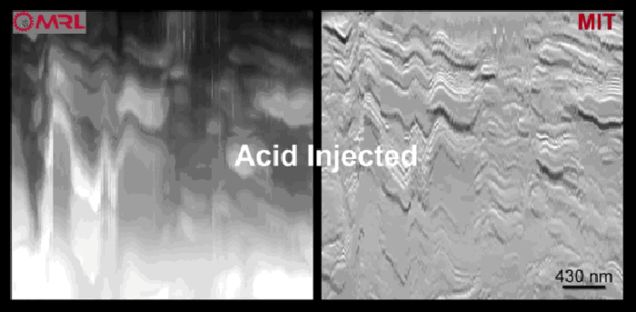
It’s relatively easy to create highly detailed images of even molecule-sized structures if you can keep them still—but if they move, you’ve little chance. Now, a new kind of microscope is allowing researchers to create video of nanoscale processes in near-real-time.
A team from MIT has created a new kind of atomic force microscope—a device which uses subtle variations in force, generated as a tiny silicon tip moves over a surface, to create images with resolutions at the nanoscale. It’s like a tiny and very accurate version of a blind person’s finger being used to read Braille.
“If the sample is static, it’s ok to take eight to 10 minutes to get a picture,” explains Youcef-Toumi, one of the researchers, in a press release. “But if it’s something that’s changing, then imagine if you start scanning from the top very slowly. By the time you get to the bottom, the sample has changed, and so the information in the image is not correct, since it has been stretched over time.”
But the new device can be used to scan across the surface of a sample a staggering 2,000 times faster than existing devices. In turn, that allows it to create videos in near-real-time. The clip below, for instance, shows a 70- by-70-micron sample of calcite as it’s exposed to sulfuric acid. As the clips progresses, you can see the acid eating away layers of calcite.

“People can see, for example, condensation, nucleation, dissolution, or deposition of material, and how these happen in real-time—things that people have never seen before,” explains Youcef-Toumi. The research is published in Ultramicroscopy.
Sponsored
It’s made possible by a new way of controlling the way the needle of the microscope moves over the surface. Instead of one set of actuators, there are two: a small, speedy scanner and a larger, slower one. While that’s been tried before, a new set of algorithms now enables the team to control the motion of the scanner so that the two types of movement never interfere with each other—a problem that plagued previous attempts.
The team’s current technique provides video at speeds of up to 10 frames per second. Now, they’re hoping to increase that to 30 frames per second—and in turn see how chemical reactions work more clearly than ever.
[Ultramicrscopy via MIT]
